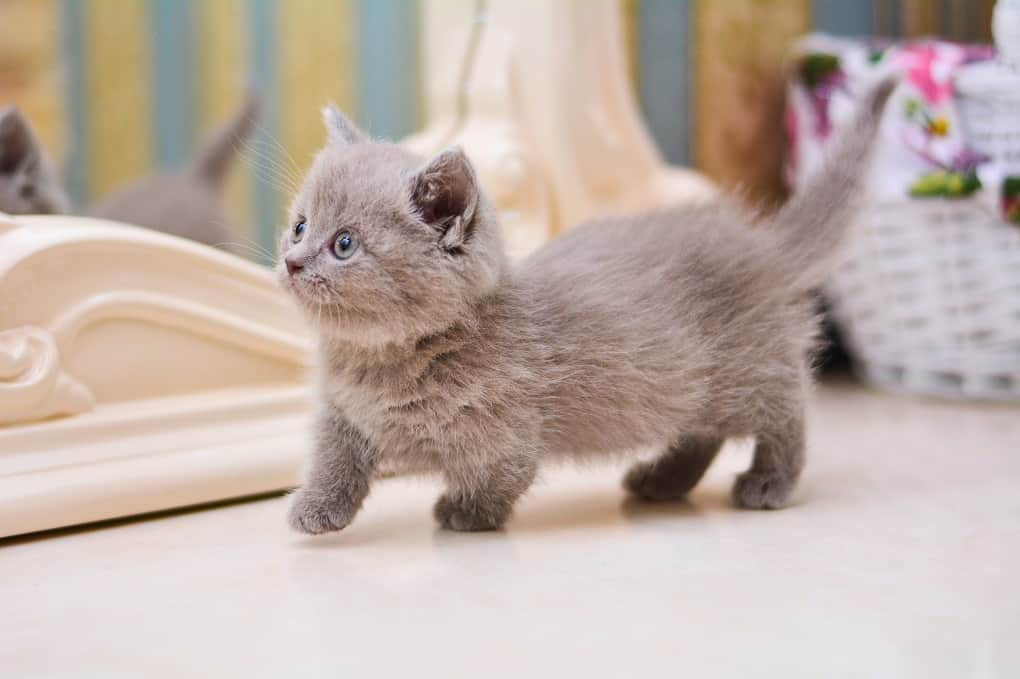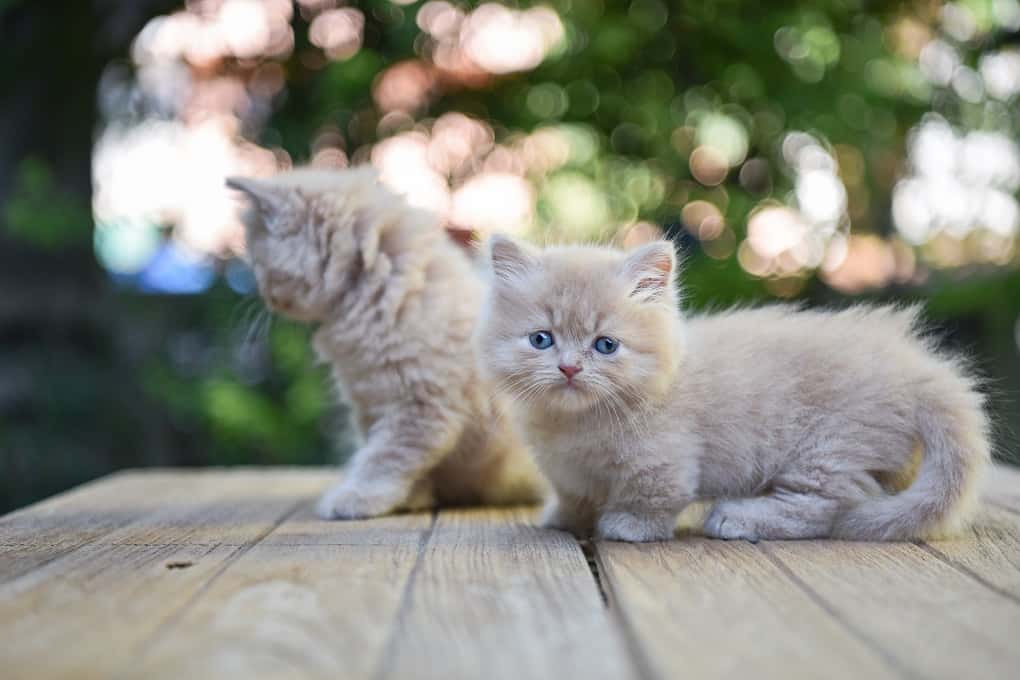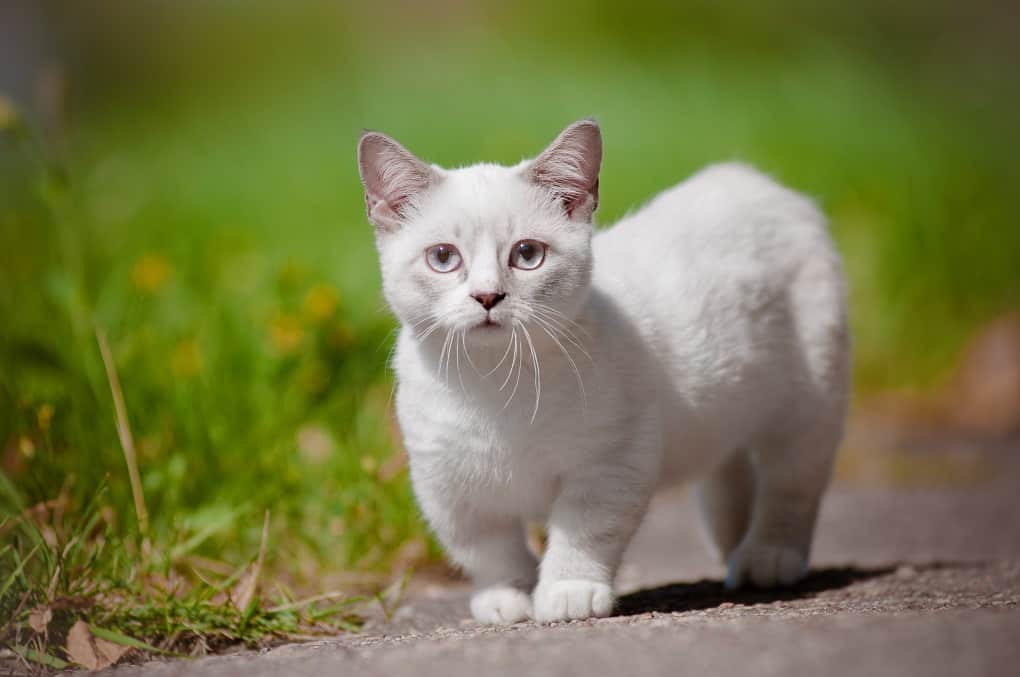Table of Contents

Few cat breeds out there have a look that is quite as unique as the Munchkin. If you’re looking to adopt a member of this breed, or just interested in what makes them tick, it’s a good idea to arm yourself with knowledge on how they behave, their level of health and other aspects of the breed.
We’re covering all of that and more for you here.
What’s the nature of the breed?
Munchkin cats have unique personalities, are outgoing, friendly and welcoming to humans and other pets. Although their legs may be short, they still love running and playing.
These cats certainly aren’t slowed down by the short legs that make the breed so unique.
Origin and history of the breed
Thousands of years ago, a single breed of cat became domesticated. Living alongside humans, they grew into a huge variety of breeds, each sporting their own looks and personalities.
One such example is the Munchkin breed, which offers a look unlike the vast majority of others out there.
While this is a breed that has only recently started to really pick up on popularity, they have been around since the early 1980s.
The stubby legs on this breed have made them so lovable, there have been many more members introduced into it since then.
Physical standards of the breed

Health and possible diseases
There is some controversy about whether or not the elongated spine of the Munchkin cat may cause serious health problems. While it can have effects in some kittens, many find that the breed is generally a pretty healthy one.
One of the issues that can occur in these cats lies within the spinal muscles. Some kittens can be prone to a condition known as lordosis, which results in a shortness in the spinal muscles.
In some cases, this may not end up being a serious issue while, more rarely, some kittens may not survive it.
When it comes to diseases, the Munchkin isn’t known for many. Lordosis is going to be what you’ll want to keep an eye out for the most. Furthermore, the health of each cat can vary, so regular vet checkups are always a good idea.
Grooming
Munchkin cats can be both longhair and shorthair. For the most part, both can do well with a weekly brushing, but longhair varieties can benefit from brushing a little more often around shedding periods in order to avoid fur matting, tangling or general discomfort.
Height and size
This certainly isn’t a breed that is known for being very tall. At the most, they tend to reach about 7 inches to 8 inches tall due to their short legs.
You can think of these cats as the corgi of the cat world. They have long, generally pretty average-sized torsos with very short legs.
These cats can range from a small to medium size. Naturally, if they are mixed with other breeds you might find that the size varies compared to purebred Munchkin cats.
Another aspect that sets them apart from others is that their legs are much shorter than other breeds.
Weight
Munchkin cats don’t tend to be particularly large. They often range in weight from as little as 5lbs up to 9 lbs. You may find that some grow to be quite petite while others are more of a medium size.
Each cat is going to be a little bit different.
Activeness
While they may look dainty and adorable, these cats actually have quite a bit amount of energy. They enjoy playing with other pets as well as children and other human family members.
With a love of exploration, you’ll also find that these cats can still get into high places even with stubby legs.
Hypoallergenic
The Munchkin cat isn’t hypoallergenic. They shed and create pet dander similarly to most other breeds. As a result, you may want to try out a test adoption if someone in your home has cat allergies to see how they are affected by having the cat around.
Lifespan
Members of the Munchkin breed are thought to live anywhere from 12 to 14 years. However, it’s worth keeping in mind that genetics and environment can create differences in the lifespans of individual cats.
Cats that receive regular checkups and live indoors are capable of living longer lives.
Caring Difficulty
With regular care, living with a Munchkin cat isn’t too difficult. Making sure their energy is spent in productive ways is key, as well as brushing their teeth, trimming nails and cleaning their ears regularly are important tasks.
In addition, regular vet checkups can help to maintain their health.
Where to get a Munchkin Cat
It’s always a good idea to take a look at local shelters before anywhere else, but it might be tough to find a Munchkin cat in one!
You also have the option of checking out breeders, but make sure that they are reputable, provide clean, healthy surroundings and well-treated kittens.
How much does a Munchkin Cat cost?
Munchkin kittens can range from around $250 to upwards of $500, depending on their unique features. If you manage to find one in a shelter, you can cut on that cost.
However, keep in mind that those in shelters have a history you aren’t familiar with. Prepare to provide extra love!
Choosing the right type of Munchkin Cat
Ultimately, the right cat will depend on your personal goals. Most people are just looking for a companion, and in those cases it’s a good idea to let the personality of the cat lead the way.
Responsibilities to consider in the care of a Munchkin Cat
What do they require?
Munchkin cats will need plenty of socialization. They are playful, energetic cats and will enjoy chasing laser pointers or string, exploring and even gathering together objects that are interesting to them.
Because of this, you may want to clean out their hiding places frequently. You’ll never know what you might find in there!
Do they need a certain level of care and attention?
These cats are intelligent as well as energetic, so they are likely to get into things if they don’t have a healthy way to use those traits.
Because of this, they are going to need regular attention, plenty of playtime and probably even some cat furniture and cat puzzle toys to keep them entertained.
Characteristics of Munchkin Cats

Behavior
The Munchkin is a cat with a lot of energy and a sociable nature. They are often great with guests and enjoy running from room to room. While his legs might be shorter than those of other breeds, it certainly doesn’t hold him back in any way.
Pattern
Munchkins are a breed that come in many different colors and patterns. They also come in different categories based on the length of their legs.
These categories include super-short varieties, rug hugger varieties and standard options. Keep in mind that those with shorter legs may have a higher chance for spinal issues.
Affectionate
While this breed certainly can be an affectionate one, they tend to be more well known for their energetic, playful nature. The Munchkin cat is one who loves to run, climb and play. Because of that, they tend to be a great companion for children who also have a lot of energy.
Dog/child-friendly
As a social cat, the Munchkin doesn’t typically have a problem with either children or dogs. Of course, it’s important to make sure that all pets and children are well-socialized and know how to be around each other safely.
That way, everyone can live in a peaceful atmosphere.
Intelligence
These are cats that are quite intelligent. Consequently, it’s wise to make sure they have plenty of puzzle toys, learn some tricks or otherwise have ways to put their brains to use positively.
Otherwise, they may get themselves into trouble, or at least into areas you may not want them in.
Energy
Munchkin cats have a lot of energy, making them great companions for playful children or other pets.
Maintenance
As long as they have a clean bill of health from the vet, Munchkin cats aren’t too difficult to care for. They do need to be able to exercise and use their intelligence, and regular grooming is as important as it is for just about any other breed of cat.
Types of Munchkin Cats
As mentioned previously, there are some types of the breed based on the length of their legs. In addition, you can find them in many different colors and patterns.
Every Munchkin cat is going to be unique, so think about what look and personality will best suit your home.
You can find Munchkin cats in a wide range of colors, including solid colors as well as other patterns. There are few color options you won’t find these cats in.
Munchkin cats can come in solid colors, calico and bi-color patterns as well as tabby. You can also find them in tuxedo patterns, and tortoiseshell and pointed.
On top of that, most (if not all) of these colors can be found in both longhair and shorthair varieties.
Munchkin Cats compared to other Breeds
The physical differences that Munchkin cats have from other breeds are quite obvious. Their short legs and long bodies make them quite unique in the cat world.
In addition, they are playful, outgoing cats, which can be quite a turn from breeds that tend to be more careful or timid. Keep in mind that every individual cat is going to be unique, so you may find a Munchkin cat that is more timid or mellow.
They come close to those teacup cat breeds.
Conclusion
There’s no denying that the Munchkin is a truly unique cat. These outgoing little critters are sure to brighten up just about any household with their adorable look and sparkling personalities.
On top of that, they also don’t demand too much in return for their efforts.